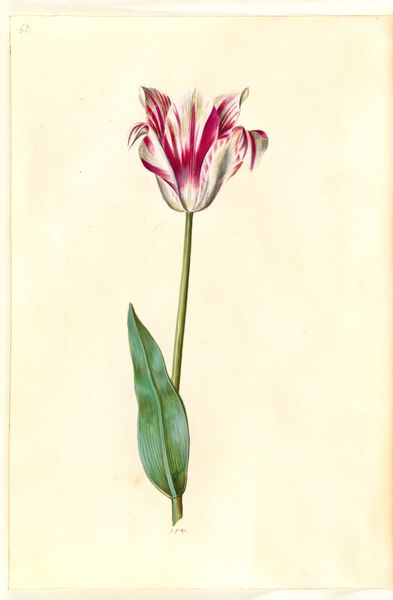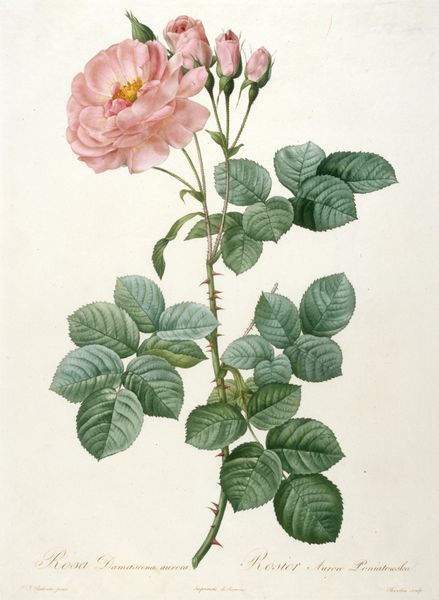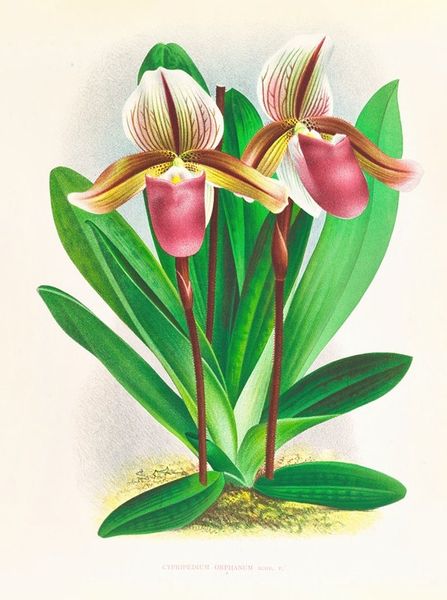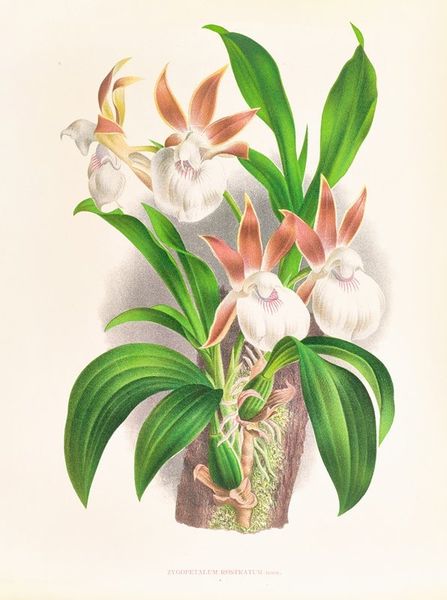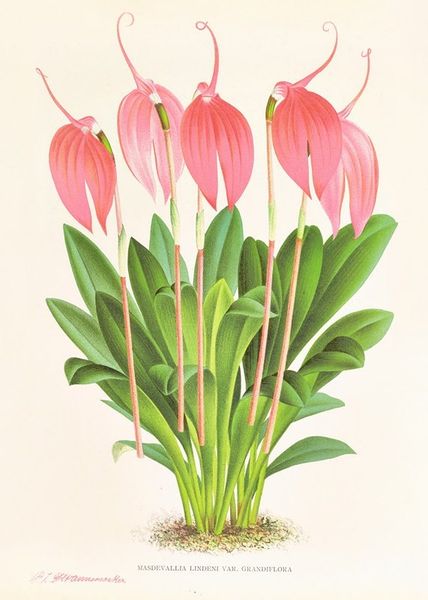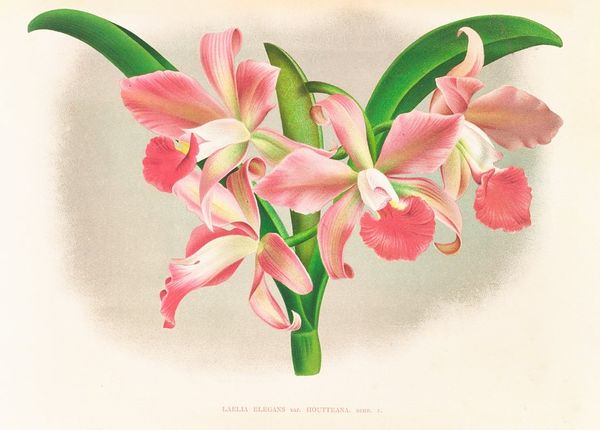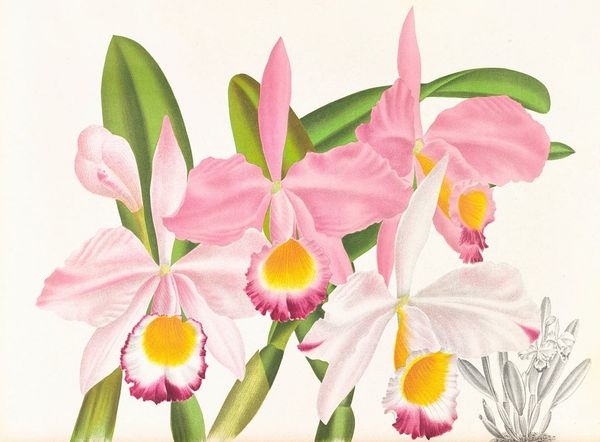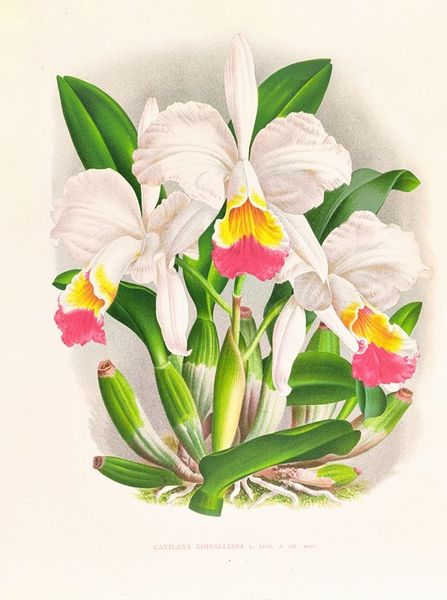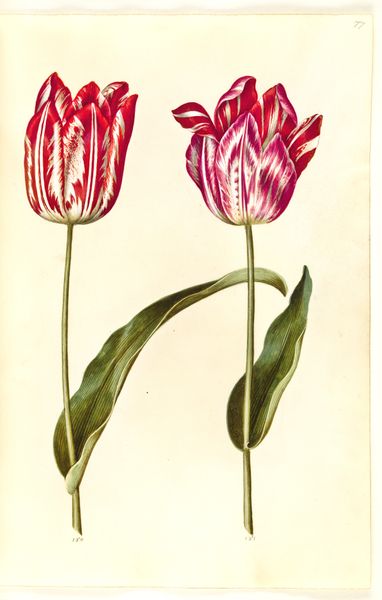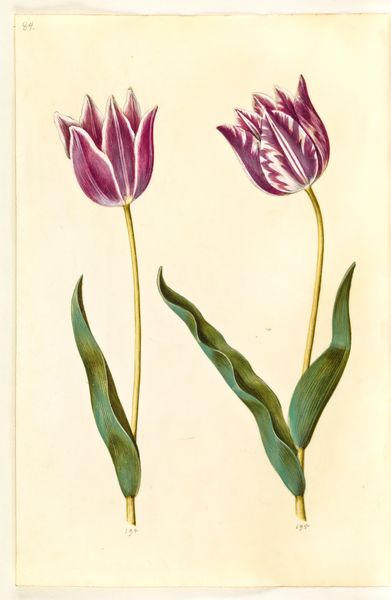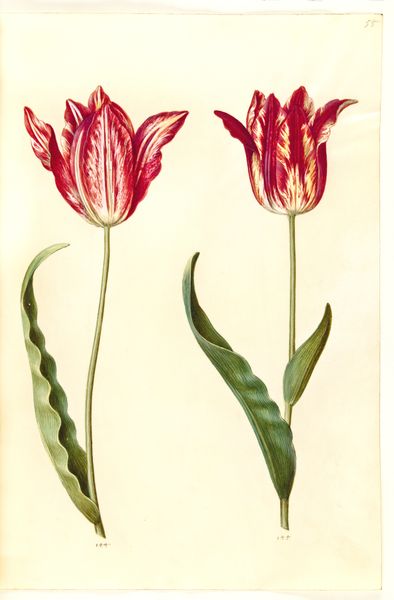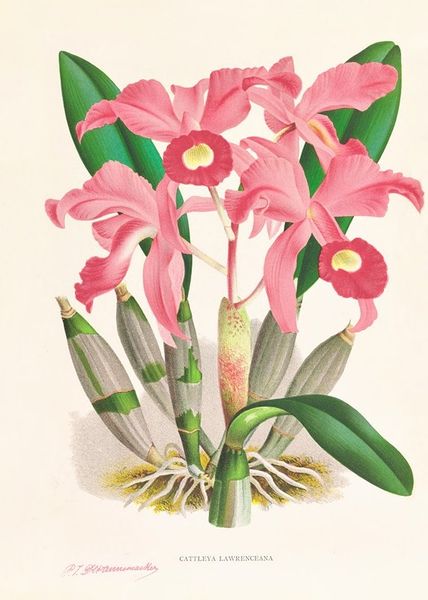
Dimensions: 10 3/4 x 8 1/2 in. (27.31 x 21.59 cm) (plate)
Copyright: Public Domain
Curator: Right, let's dive into this piece. Here we have "Chevre-feuille", honeysuckle, a print and watercolor drawing created around 1827, and now held at the Minneapolis Institute of Art. Editor: It has a very delicate sensibility, doesn't it? Like a whisper. The colors are so muted, the lines soft...it's as if the artist was trying to capture not just the honeysuckle, but its essence. Curator: Absolutely. I see it too. There’s this ethereal quality that comes across through the watercolour and print combination. Its botanical artistry is very much in line with its period and the tradition of accurately illustrating plants and their function, though. There’s something romantic in the rendering but there is a sense of careful objectivity that cannot be forgotten. Editor: I agree with the careful objectivity aspect – there's almost an element of control being represented through its neat rendering that seems like a conscious attempt to contain the blossom’s overwhelming wild growth. Curator: Good point. Looking at this today, the tension speaks to our often strained relationship with the environment, that delicate balance between our attempts to dominate nature and our admiration of it. And there are a variety of honeysuckles. To what end did the author record this very specific version? The history, economics, uses and symbolism might enlighten us more about why it looks like that! Editor: I was also going to say the way that certain petals curve outwards and upwards and others droop looks almost intentional. I find that there are subtle commentaries on life, decay, beauty, even resilience through these shapes. The honeysuckle, clinging and winding…maybe a symbol of endurance? Curator: Yes, the symbolism adds another layer. Honeysuckle has meant many things in many cultures—love, generosity, affection. Thinking about gender in the 18th and 19th centuries, flowers, in general, and this flower, in particular, carry a lot of loaded gendered language. How about this honeysuckle? Who is giving the affection to whom here, is the real question. Editor: I'd love to know if it’s blooming on some old stone wall! Curator: It's remarkable how a seemingly simple botanical study can evoke so many interconnected ideas, right? Editor: Absolutely. It makes you realize that the deepest connection, whether to another person or the natural world, demands both scientific observation and imaginative understanding, especially regarding art.

